What qualities will define this Sunday’s 105th running of the Indianapolis 500? We know that this race has the potential to be the fastest running of the Indy 500 in history. Over two days of time trials, the 33 cars that qualified averaged over 230 miles per hour over the course of their four-lap qualifying runs. If the conditions are right during the race, the 500 mile speed record of 186.563 mph – just a few tenths above 300 kilometres per hour – could also be broken.
Speed records are impressive in their own right, but every racing fan loves, more than anything, to watch a competitive race with plentiful opportunities to overtake and race wheel-to-wheel.During last year’s Indianapolis 500, held three months later than usual in August and behind closed doors due to the pandemic, drivers found it difficult to overtake. There were just 21 lead changes during the race, less than one-third of the record 68 official lead changes.
Outside of mid-race restarts, it was difficult for cars follow each other and on overtake on-track. This coincided with the addition of the protective aeroscreen to the Dallara IR18 chassis, which has absolutely done its intended job of protecting the drivers, but the added weight and drag from the assembly had unintended side effects for the quality of racing.
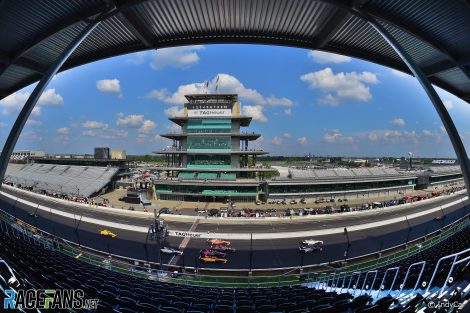
The IR18’s Indianapolis 500 debut, in 2018, also saw a number of drivers voice concerns about not being able to follow other cars in traffic, especially exiting corners. That led to off-season tests and aero tweaks which led to a 2019 race that was received much better from the general public. Coincidentally, the 2018 Indy 500 was also one of the hottest on record, with ambient temperatures breaking the 32°C threshold.
As of publication, projected temperatures for this year’s Indy 500 should be much cooler, under the “average” Indy 500 temperature of 25°C which seems much more sensible for the race’s traditional May calendar slot. And if this year’s changes to the aero package have the intended effect, it will be much easier for cars to follow one another through corners and overtake with enough momentum and speed. Which, of course, means that the quality of the race itself will be much better than it was last year.

But beyond the many contenders for victory and the questions about whether or not the race will go down as an all-time classic, a contemporary dud, or somewhere in between – there is one welcome addition to the Indianapolis 500 that was sorely missing from last year’s race: The fans at the speedway.
At 40 percent capacity, Indianapolis Motor Speedway will open its gates to as many as 135,000 spectators. If every available ticket is sold, and every available seat is filled along the grandstands, this would be the biggest sporting event since the first wave of the novel coronavirus pandemic came crashing down over the entire world last spring.
It’s a sign of things returning to something that resembles the normal way of life we knew before, and we certainly hope that they, along with the 33 drivers and every member of the crews that support them, can come home safely long after the chequered flag falls, and the winning driver streaks across the famous yard of bricks to victory.
Advert | Become a RaceFans supporter and
Dixon leads IndyCar’s new stars at front of 33-car field
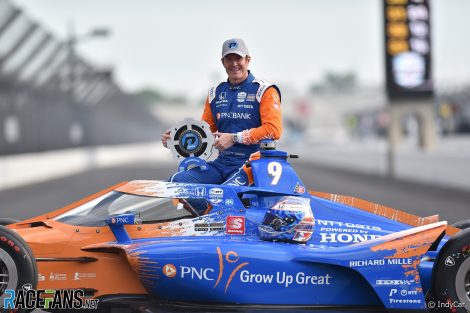
A second Indy win is “goal number one”, said Dixon. “I think it’s the first goal that we set for the team all year, then you focus on the championship. That’s never changed. I think the first time you step into this place, come with one of the best teams, that’s the obvious sort of goal for us to try and achieve that.”
“Last year was frustrating,” Dixon recalled of finishing second to Takuma Sato, having led a whopping 115 laps. “Again, this place owes me nothing. We got to keep knocking on that door and hopefully one day again, one day soon, that opens up.”
One day soon could very well be this Sunday. But for that to happen, Dixon will have to fend off the charge of not only the eight other previous winners, and a slew of veteran fixtures who’ve never won the Indy 500, but also have to see off the challenge of IndyCar’s current youth movement.
These are led by a quartet of drivers under the age of 25 who’ve already won a race each this season: Colton Herta, Patricio O’Ward, Rinus VeeKay, and Dixon’s Ganassi team mate Alex Palou. They will go from the first four rows of the grid, with Herta and VeeKay starting starboard of Dixon on the front row, both young men aiming to break a nearly 70-year-old record as the youngest Indy 500 winner in history (O’Ward, who starts from the fourth row, is also eligible to break the record).

The 2018 winner’s struggles are endemic across the entire Penske fleet. Rookie Scott McLaughlin, who qualified 17th, was the one relative bright spot out of the camp. Reigning champion Josef Newgarden qualified 21st, and 2019 winner Simon Pagenaud is 26th.
That’s to say nothing of what Penske-supported upstart Paretta Autosport and Simona de Silvestro had to go through just to grab the 33rd and final grid position, as the only woman in the race, driving for a team primarily staffed with women working as mechanics, engineers, spotters and other crew members.
Penske’s plight is in stark contrast to Ganassi, who had all four of their drivers in the Fast Nine qualifying session – Dixon, Palou, third-year driver Marcus Ericsson, and 2013 winner Tony Kanaan, in what will likely be his final Indy 500 appearance at the age of 46.

Andretti’s technical support has also been great for the two-car Meyer Shank Racing effort, with three-time Indy 500 winner Helio Castroneves making the third row in his continued quest to become the fourth four-time Indy 500 winner, and Jack Harvey solidly in the field, hoping for his own breakthrough at Indy. But last year’s pole winner Marco Andretti was left deep in the field this year, and a returning Stefan Wilson barely escaped the last row shootout himself in Andretti Autosport’s fifth and sixth cars, respectively.
Ageing athletes chasing elusive championships at the sunset of their careers is a compelling story of any sport and the Indy 500 is no exception. Driver/owner Ed Carpenter is a sentimental, hometown favourite from Indianapolis, trying to win the race for the 18th time in his career. He once again has a fast car, defying the struggles that engine partner Chevrolet have had in contrast to rival Honda teams.
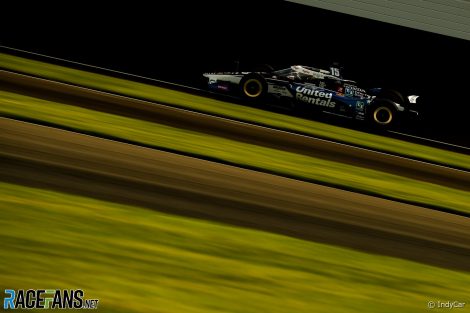
The aforementioned Marco Andretti is the third-generation driver who’s still been chasing the Indy win that just barely got away from him as a teenager 2006, but another legacy driver hungry for his first Indy 500 win is Graham Rahal – who’s already racked up 13 previous starts without a win at the age of 32, and is hoping to follow in the footsteps of his father (and team director), 1986 winner Bobby Rahal. One could also make the argument that the clock may be starting to tick for Newgarden to win the race for the first time, even though he is still young and very much in his competitive prime!
If there is an Indianapolis 500 upset in the works, similar to the late Dan Wheldon’s shock victory as a part-time entrant 10 years ago, it may very well come from fighting minnows Dale Coyne Racing and their duo of young drivers in fast cars that have flown under the radar throughout practice and qualifying. The returning Ed Jones upstaged Fernando Alonso in his 2017 debut with Coyne, and rookie Pietro Fittipaldi has Indy 500 success in his bloodline, as the grandson of two-time Indy winner Emerson.

Oh, and by the way – Takuma Sato is the two-time and defending champion of the Indianapolis 500. The seemingly ageless Sato could win this race for a third time, all of them coming after his 40th birthday. If that happens, any debate over who the greatest Japanese racing driver of all time is, would certainly begin and end with Sato above all – and he would now have to be part of a different discussion, as part of the Indy 500’s greatest champions of the modern era.
Advert | Become a RaceFans supporter and
Starting grid and spotters’ guide
Follow the Indy 500 with RaceFans
For live updates throughout Sundays Indy 500, follow RaceFans Live on Twitter:
IndyCar
- Penske suspends four staff after double IndyCar disqualification
- Petty officialdom or deserved decisions? Five drivers stripped of wins in 2024
- McLaren releases Malukas from contract after missing opening races
- McLaren left reeling after “abysmal” Barber weekend
- McLaughlin and Power put Penske back on top with one-two




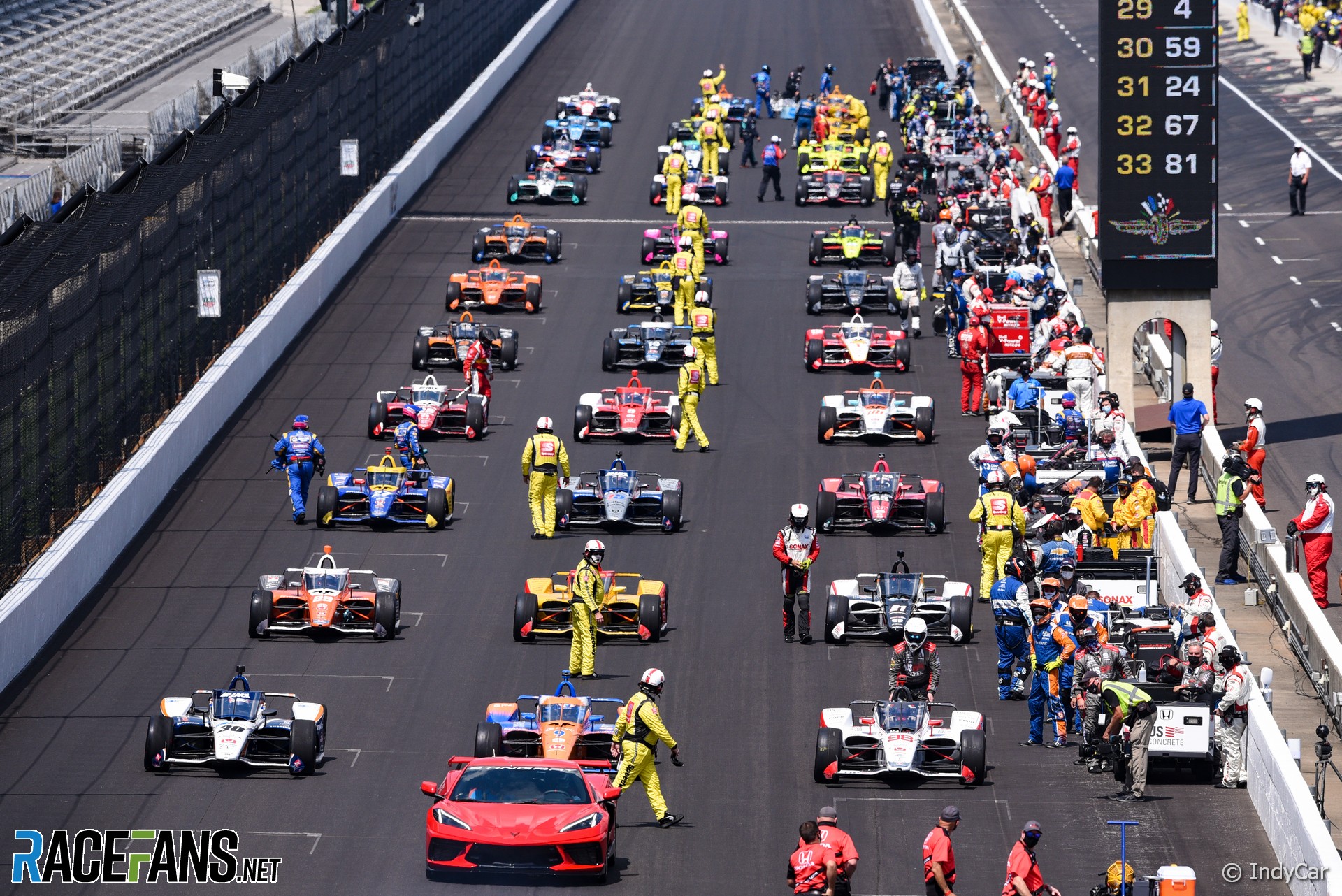








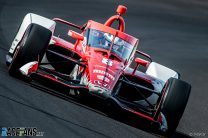






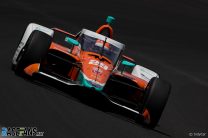

















Jere (@jerejj)
27th May 2021, 12:21
Few tenths? I thought tenths, hundreds, thousands (of a second), etc., were only reference for times, not speed figures.
RandomMallard (@)
27th May 2021, 12:36
@jerejj Those are standard terms in decimal mathematics. Anything in the first decimal place is a tenth, the second decimal place is hundredths and the 3rd is thousandths etc.
Jere (@jerejj)
27th May 2021, 13:50
@randommallard I know, but not exactly my point unless you mean everything. Timing, speeds, other things.
Some Guy
27th May 2021, 15:08
Yes, ALL things. tenths, hundredths, thousandths, etc. – for any number including decimal places. No matter what is being measured or represented.
RandomMallard (@)
27th May 2021, 15:23
@jerejj Sorry I misunderstood. That’s the problem with internet comments: you can never quite interpret the implicit features of them without something like tone of voice.
Henri
28th May 2021, 10:49
A tenth of a second is 0.1 sec.
A tenth of a kilometer is 0.1km
A tenth of kilometer per hour is, you’ve guessed it, 0.1km/h
Amazing how the decimal system works. Amazing how America doesn’t know this.
James
29th May 2021, 9:57
Ironically, a tenth of a Dollar is 10 cents.
A hundreth of a Dollar is – huh! – a cent.
Aussie Rod (@aussierod)
27th May 2021, 14:05
The Indy 500 and the Monaco Grand Prix. Two of the most prestigious races on the racing calendar, typically run on the same weekend, and they are the absolute antithesis of one another in every way possible. Love it.
Can’t wait for this years race.
Don
27th May 2021, 17:14
Agreed, but Monaco is painfully boring. Very happy they’re not running on the same day this year.
Sjefke Dekkers
28th May 2021, 7:42
Yeah, and both won by a Dutchman!!!
Roger Ayles (@roger-ayles)
27th May 2021, 15:23
One thing that I hope has improved for this year is the tow as for as much of the criticism of recent years was aimed towards the difficulties cars had following, An issue that was just as big was how much less of a tow the current cars produce due to having less drag than they did before 2018.
Even when cars could run closer the past 2-3 years they have struggled to really do much due to how much less effective the draft has been since they developed the current aero package which produced significantly less drag than the previous one. This issue has also hindered the racing on other ovals. You compare the pre 2018 races at Pocono with the single file races with the current package.
And while that silly Nascar gimmick PJ1 compound has also played a role in the poor racing at Texas, The aero package certainly hasn’t helped due to the less effective tow the cars now produce.
Not calling for a return of that awful pack racing by the way, I just think they need to look at getting the cars to produce a better tow to allow for more sling shot passes. Maybe they should look at something similar to that hanford device CART ran at Michigan & Fontana (Another track nascar may be about to butcher).
Bams Turtle
28th May 2021, 4:05
what you want is quite literally impossible, because you want 2 opposing elements of fundamental physics.
in order for a car to follow closely through a corner, the airflow needs to be ‘clean’ enough from the car in front for the downforce of the following car to have an effect.
In order to generate a substantial ‘tow’ on the straights, the airflow being generated by the leading car needs to be ‘dirty’ or heavily disturbed, so its effect on the car following is heavily reduced.
even with the ground-effect floors that Indycars run for the 500, there still needs to be an element of airflow for the vehicle to driving into for the floor to have an effect.
Its a circumstance where you can’t have your cake and eat it too
Antz (@antznz)
27th May 2021, 23:49
I’ve been losing interest in F1 so while still following, I’ve been branching out. Really enjoying F2, FE and going to try my first ever indy 500 this year. Can’t wait!
Plus 2 kiwi’s on the grid is a nice bonus!
kpcart
28th May 2021, 1:08
Indycar is overall much more entertaining than F1. I’ve watched F1 and Indycar since mid 90s. Indycar isn’t as elite, but is full of great cars, greats tracks, great drivers and great racing. Watch back the CART era on YouTube,
anon
28th May 2021, 10:02
Seems a bit odd to recommend Indycar based on footage of the breakaway series that died out decades ago…
Pat Ruadh (@fullcoursecaution)
28th May 2021, 23:35
Welcome to the party @antznz
Be sure to check out Long Beach and Laguna Seca in September!
Antz (@antznz)
29th May 2021, 5:38
@fullcoursecaution thanks for the suggestions! I’ll see what I can do, so much behind party wall barriers these days but I think I can get weekend passes!
Green Flag (@greenflag)
28th May 2021, 1:56
While the 500 will be much faster and have dozens more passes than Monaco, unfortunately it will have far more crashes. Yellows breed yellows. Let’s hope aeroscreens works as well as halos.
Sean
28th May 2021, 6:57
Structurally the aeroscreen is pretty much identical to the halo with the additional screen for small debris protection.
Also, Monaco could have used a crash or two.
amian
29th May 2021, 9:59
I hope the crashes are awesome! Who doesn’t love a great, spectacular crash??
Pontouf9
28th May 2021, 5:52
Not sure if this is the place to ask it, but I’m wondering if anyone can explain this to me. When the cars are doing fast laps at Indy (or probably any oval, I’d guess), I’ve noticed that they exit a corner then drift back to the center of the track before going wide again for the next corner. Wouldn’t staying wide be a more optimum path to stay on? Does it have anything to do with preparing for the banked corners? It can’t be to catch a tow, because they’re doing it when they’re alone on track. What am I missing? Any insight would be welcome. Thanks!
John Toad (@)
28th May 2021, 19:02
The suspension is set up so the cars try to turn left.
This is to help with speed through the corners, which are all left turns.
It makes the cars drift towards the centre of the straights when coming off the banking at the exit of a corner.
DanielH (@danielh)
29th May 2021, 21:52
Hmmm. I’m not sure. What you say is true about the suspension (and tyres I believe, too) but if staying up high was fastest, wouldn’t they just steer to keep themselves straight to the wall?
I have always assumed they drop down on the straights to avoid the aero wake from the car interacting with the wall and causing drag. But that’s just a guess.
Horacio
28th May 2021, 7:42
I agree.
Unless, of course, is F1 in Monaco, because then you should be thrilled to watch multimillion dollar race cars doing an hour long procession and taking some turns at 70 or 80km/h.
barkun (@barkun)
28th May 2021, 10:39
How nice it is to see such a full, mixed grid ! Will F1 ever be like that again?
Green Flag (@greenflag)
28th May 2021, 15:13
A full mixed grid of identical cars with different paint jobs.
anon
28th May 2021, 18:28
@barkun it depends on how exactly you define a “mixed grid”, given that the cars themselves are built to a standard specification.
It also has to be said that the picture is a little skewed by the fact that the larger teams enter more cars than usual – Ganassi, Penske and Andretti, having all entered four works cars each, make up one third of the field, with several others running three cars. In terms of the number of teams, I think you would find that there aren’t quite as many as it might appear on first sight from the number of entrants alone.
John Toad (@)
28th May 2021, 19:04
Perhaps F1 could take a leaf out of their book and let teams have different liveries on their cars.